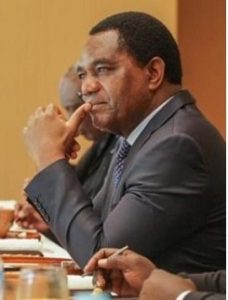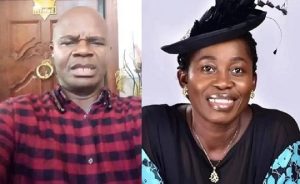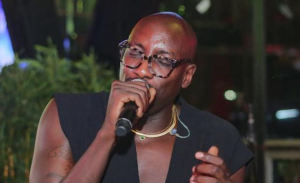Biden awards Medal of Honor to 7 US Army soldiers in White House ceremony
6 min readPresident Joe Biden awarded the Medal of Honor – the nation’s highest military award for valor – to seven US Army soldiers in a White House ceremony Friday, marking the last time he would preside over such an occasion as commander in chief.
“These are genuine, to their core heroes. Heroes of different ranks, different positions and even different generations. But heroes who all went above and beyond the call of duty – heroes who all deserve our nation’s highest and oldest military recognition, the Medal of Honor,” Biden said as he introduced the stories of courage and gallantry.
Six of the medal recipients were posthumously recognized decades after their heroic actions during the Korean and Vietnam Wars, while the seventh, then-Private First Class Kenneth J. David, attended the White House ceremony in person.
Those honored posthumously were: Pvt. Bruno R. Orig; Pfc. Wataru Nakamura; Cpl. Fred B. McGee; Pfc. Charles R. Johnson; Gen. Richard E. Cavazos; and Capt. Hugh R. Nelson Jr.
“Today we award these individuals a Medal of Honor,” said Biden. “We can’t stop here. Together as a nation, it is up to us to give this medal meaning. To keep fighting. To keep fighting for one another, for each other. To keep defending everything these heroes fought for and many of them died for.”
David shook Biden’s hand to a room full of applause Friday as he received his medal.
In May 1970, David’s company came under an intense attack from a large enemy force. David, who was a radio-telephone operator, took up a position to engage the enemy and draw fire away from his fellow soldiers.
“Without regard for his own life,” the White House said, he pushed forward.
Surrounded on three sides, David fought back with his rifle and hand grenades. His company had suffered numerous casualties, and when enemy forces tried to target the wounded, he jumped up and yelled to draw the attention back to himself.
After he was wounded, David stayed in the fight, drawing enemy fire away from the friendly helicopters that were trying to land to evacuate others. Only when the last helicopter landed did he retreat from his position, continuing to fire until he was finally evacuated.
Pvt. Bruno R. Orig
Orig was returning from a wire-laying mission near Chipyong-ni, Korea, in February 1951 when he saw several fellow soldiers who had been wounded during an enemy attack. He immediately administered first aid and began evacuating the wounded to safety with the help of other soldiers – becoming exposed to enemy fire. He was returning from one of those trips when he saw a machine-gun crew had been almost entirely wounded.
Orig volunteered to man the machine gun, and he provided cover for a withdrawing friendly platoon. He fought in that position until they were overrun. The White House said when the lost ground was later recaptured, “Orig was found dead beside his weapon, and the area in front of his gun was littered with several dead enemy soldiers.”
Pfc. Wataru Nakamura
As a Japanese American, Nakamura was sent to an internment camp with his family after the attack on Pearl Harbor, his nephew, Gary Takashima, told reporters. Still, he enlisted in the Army “as soon as he could,” Takashima said, “to show his loyalty and sense of duty to his country.” He first served in Europe during World War II and was called up from the Reserves during the Korean War.

Nakamura was killed in May 1951 in heavy fighting after he was attacked while checking and repairing a communications line between his platoon and a command post. According to the White House, Nakamura was fired upon while checking the communications line and found that enemy forces had “surrounded friendly positions and were threatening to break the company defense lines.”
Nakamura rushed the enemy with a fixed bayonet and destroyed a hostile machine-gun nest, driving them out of several captured bunkers, the White House said. He withdrew when he ran out of ammunition, only to rearm himself and return to the fight with other soldiers before he was killed by an enemy grenade.
“He would have been greatly honored to receive the Medal of Honor but would have felt all of this was too much for doing what he was supposed to,” Nakamura’s family told reporters last week.
Cpl. Fred B. McGee
In June 1952, McGee “delivered a heavy volume of supporting fire” during an assault on an enemy’s position, assuming command of his squad after several fellow soldiers, including his squad leader, were wounded. Under intense fire, McGee moved his gun several times to continue to support the assault, giving cover fire to other elements of his platoon. He ordered his squad to evacuate its position, but refused to follow suit, staying behind to evacuate the wounded and dead.
“Though wounded in the face, he heroically exposed himself by standing straight up under intense enemy machine-gun and mortar fire and attempted to evacuate the body of the company runner,” the White House said.
McGee died on January 3, 2020, his granddaughter, Kristen Lee Bailey, told reporters last week, adding that his acts on the battlefield came “as no surprise, because he was always selfless, loving, and honorable in everything he did.”
Pfc. Charles R. Johnson
Johnson was killed in June 1953 during an overwhelming nighttime attack by Chinese forces on his bunker. Despite being wounded, Johnson gave first aid to others, helping fellow soldiers and killing “several enemy troops in hand-to-hand combat.” Once reaching the safety of a second bunker, Johnson realized the situation was “untenable” and put himself between the wounded and the enemy forces, telling them he would hold them off “as best as he could.”
“His brave and selfless efforts saved the lives of as many as 10 soldiers,” the White House said.
Garry Trey Mendez, Johnson’s nephew, never got to meet his uncle. But he has met the men Johnson saved and learned about the story of heroism from them.
“It’s just so great to hear his story told to the nation at large and hopefully inspire everyone the way it’s inspired us in the family over all these years,” he told reporters.

Gen. Richard E. Cavazos
Nearly three decades before Cavazos became the US Army’s first Hispanic four-star general, he was a first lieutenant in the Korean War, where he led his company in a June 1953 raid on an entrenched enemy outpost. After inflicting heavy casualties on the outpost, Cavazos and his men came under intense fire. Cavazos – for whom the sprawling Texas military base formerly known as Fort Hood would later be renamed – withdrew and regrouped, leading more attacks on the enemy outpost, each time destroying enemy equipment and personnel.
When he was ordered to withdraw, Cavazos repeatedly returned to the battlefield to retrieve and evacuate casualties who had been left behind, only allowing himself to be treated for his own wounds when he was assured the hill was cleared. Cavazos’ military career lasted 33 years.
“He was a man of deep faith who loved his country, loved his family, loved his soldiers, and it was that love – that selfless love – that drove him up the hill that night in 1953 to collect the men of his company and get them to safety,” Cavazos’ son, Tommy, told reporters last week.
Capt. Hugh R. Nelson Jr.
Nelson was acting as aircraft commander of an armed Huey helicopter during the Vietnam War in June 1966 when his helicopter was shot down, crashing in the middle of enemy positions. With enemy fire coming from about 30 feet away, Nelson began evacuating his crew from the wreckage, pulling two soldiers from the helicopter. After laying the second soldier on the ground, he used his own body “as a human shield to cover his comrade,” the White House said.
“He saved the life of his fellow soldier at the sacrifice of his own,” the White House said. One of Nelson’s fellow soldiers was then able to use a smoke grenade to signal other aircraft to evacuate the survivors and Nelson’s remains.
By Oren Liebermann, Haley Britzky and Donald Judd, CNN






